“Canals in the waters of Lake Xochimilco were initially created along with that of a kind of artificial agricultural plots called chinampas. Chinampas were invented by the pre-Hispanic peoples of the region around 1,000 year ago as a way to increase agricultural production. On the shallow waters of the lakes, rafts were constructed of juniper branches. Onto these rafts floating on the water, lakebed mud and soil were heaped and crops planted. These rafts, tied to juniper trees, would eventually sink and a new one built to replace it. Over time, these sunken rafts would form square or rectangular islands, held in place in part by the juniper trees. As these chinampa islands propagated, areas of the lake were reduced to canals. These “floating gardens” were an important part of the economy of the Aztec Empire by the time the Spanish arrived. Today, only about 5,000 chinampas, all affixed to the lake bottom, still exist in their original form, surrounded by canals and used for agriculture. The rest have become solid ground and urbanized. In the center of Xochimilco, there about 200 chinampas, covering an area of 1,800 hectares. These remaining chinampas are part of the Xochimilco World Heritage Site.
The best-known chinampa in Xochimilco belonged to a man named Julián Santana Barrera, a native of the La Asunción neighborhood. Santana Barrera was a loner, who was rarely seen in most of Xochimilco. He came to fame because he would collect the old broken bodies of dolls from the canals and rubbish tips, and then hang them from branches and tie them to tree trunks to keep away evil spirits and appease the spirit of a dead girl he had found in the canal a few years before. He would state that he believed that the dolls were somehow still “alive” but “forgotten” by their owners, and other places was “discovered” in the early 1990s, when the area was being cleared of excessive water lilies. Before this, it was thought that no one lived on this chinampa, but Santana Barrera was there, living in a hut with no services and generally did not receive visitors, other than family. The display of dolls and parts attracted attention of the press. Eventually, he stated to them that the dolls were there to keep away evil spirits and to help with the harvests in his gardens. His favorite was called La Moneca and he frequently moved the dolls around among the tree branches. He began to receive more visitors to see the dolls, which eventually included local political figures. Santana Barrera died in 2001; there were many ideas on how he was killed, some say he drowned himself in the river because he was driven insane, others say the dolls came alive and killed him. But in fact he just died of old age. The dolls, however, are still on the island, accessible by boat”. – Wikipedia
The best-known chinampa in Xochimilco belonged to a man named Julián Santana Barrera, a native of the La Asunción neighborhood. Santana Barrera was a loner, who was rarely seen in most of Xochimilco. He came to fame because he would collect the old broken bodies of dolls from the canals and rubbish tips, and then hang them from branches and tie them to tree trunks to keep away evil spirits and appease the spirit of a dead girl he had found in the canal a few years before. He would state that he believed that the dolls were somehow still “alive” but “forgotten” by their owners, and other places was “discovered” in the early 1990s, when the area was being cleared of excessive water lilies. Before this, it was thought that no one lived on this chinampa, but Santana Barrera was there, living in a hut with no services and generally did not receive visitors, other than family. The display of dolls and parts attracted attention of the press. Eventually, he stated to them that the dolls were there to keep away evil spirits and to help with the harvests in his gardens. His favorite was called La Moneca and he frequently moved the dolls around among the tree branches. He began to receive more visitors to see the dolls, which eventually included local political figures. Santana Barrera died in 2001; there were many ideas on how he was killed, some say he drowned himself in the river because he was driven insane, others say the dolls came alive and killed him. But in fact he just died of old age. The dolls, however, are still on the island, accessible by boat”. – Wikipedia
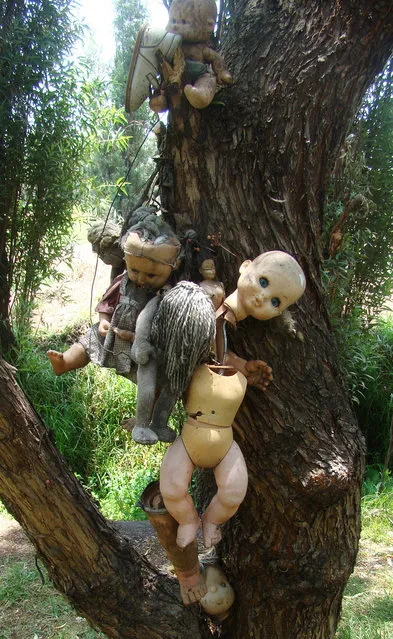
Xochimilco – Island of the Dolls – Losing Her Head. Photo by Ramalama_22
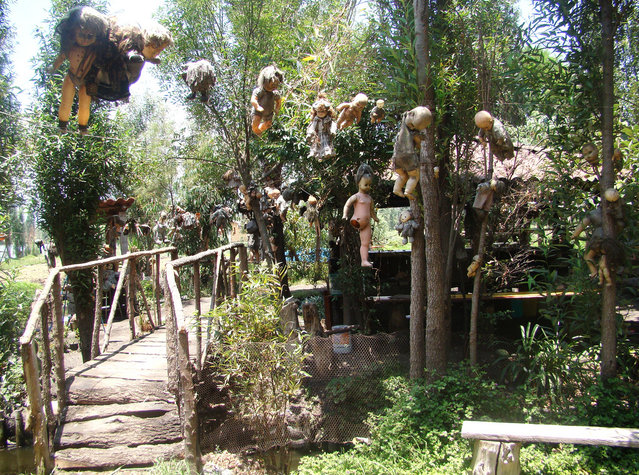
Xochimilco – Island of the Dolls – Dead Line. Photo by Ramalama_22
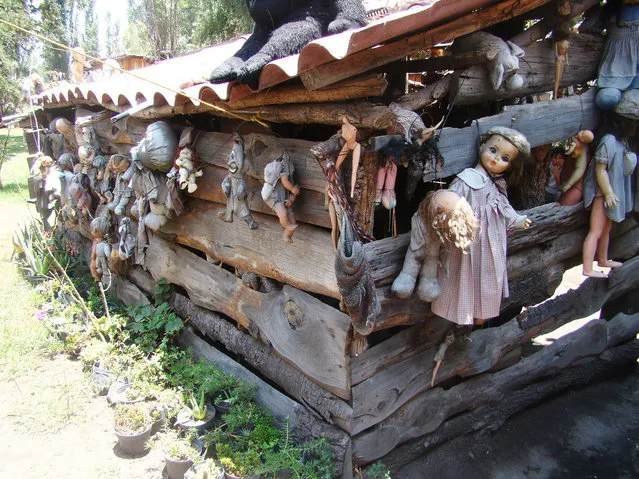
Xochimilco – Island of the Dolls – Doll Shack. Photo by Ramalama_22
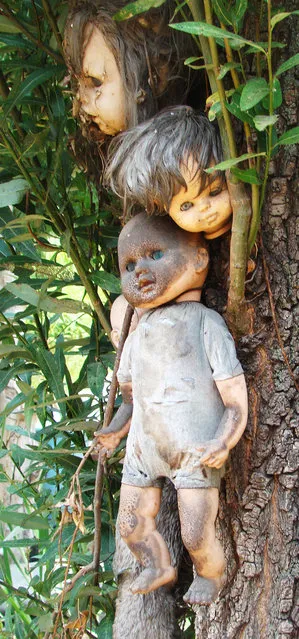
Xochimilco – Island of the Dolls – Rotting Skin. Photo by Ramalama_22
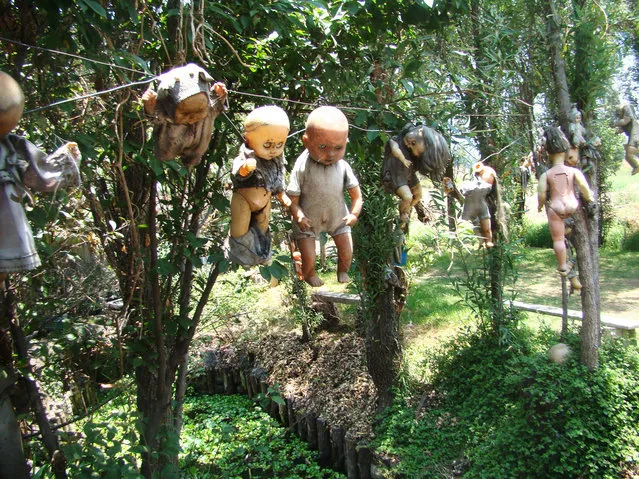
Xochimilco – Island of the Dolls – Hung Out to Die. Photo by Ramalama_22
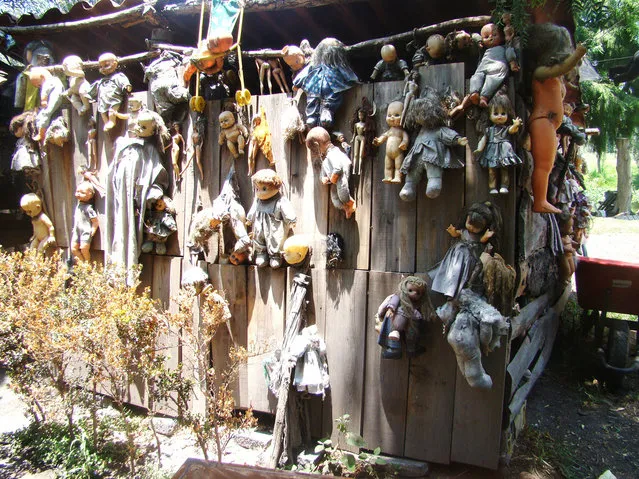
Xochimilco – Island of the Dolls – Wall of Death. Photo by Ramalama_22
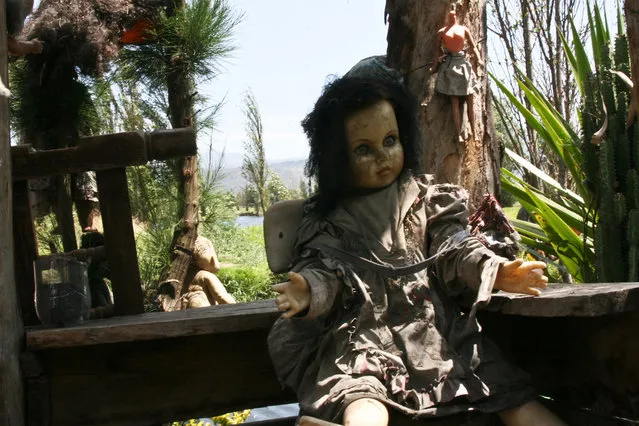
Island Of The Dolls/Isla de la Muñecas. Photo by Alejandro De La Cruz
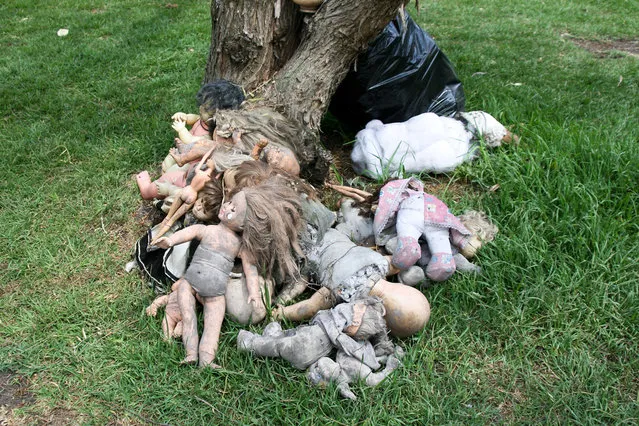
Island Of The Dolls/Isla de la Muñecas. Photo by Alejandro De La Cruz
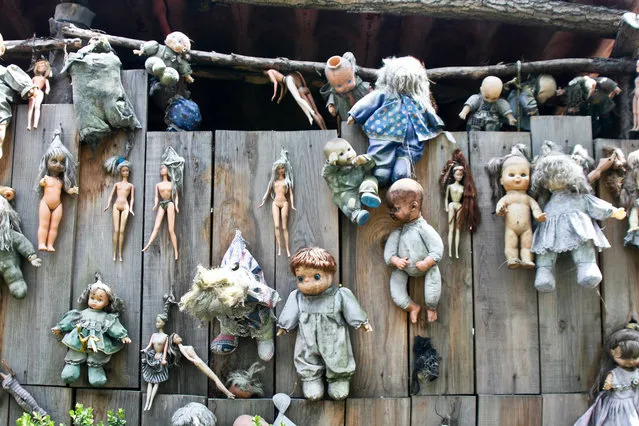
Island Of The Dolls/Isla de la Muñecas. Photo by Alejandro De La Cruz
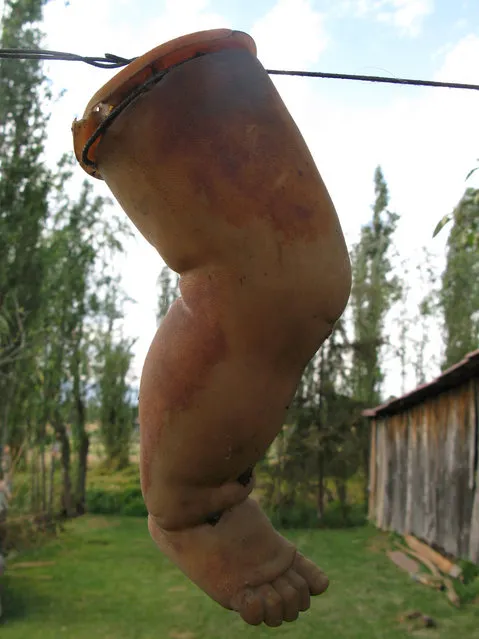
Getting a leg up. Isla de las Munecas (island of the dolls) in Xochimilco, Mexico. Photo by Alfredmuller
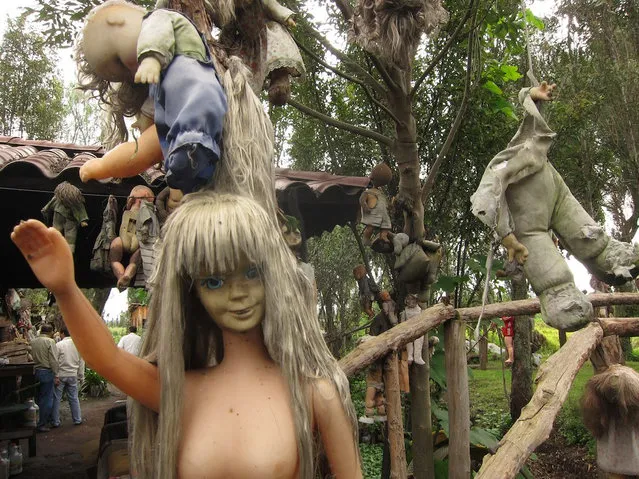
Isla de las Munecas (island of the dolls). Photo by Carolina Freitas da Cunha
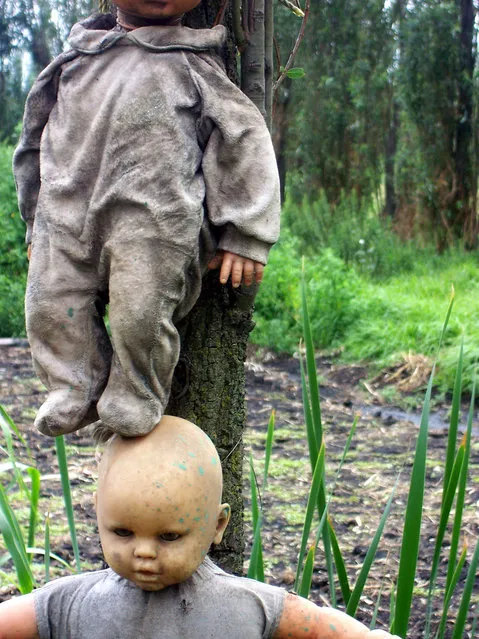
Isla de las muñecas. Photo by Quique.barrueta
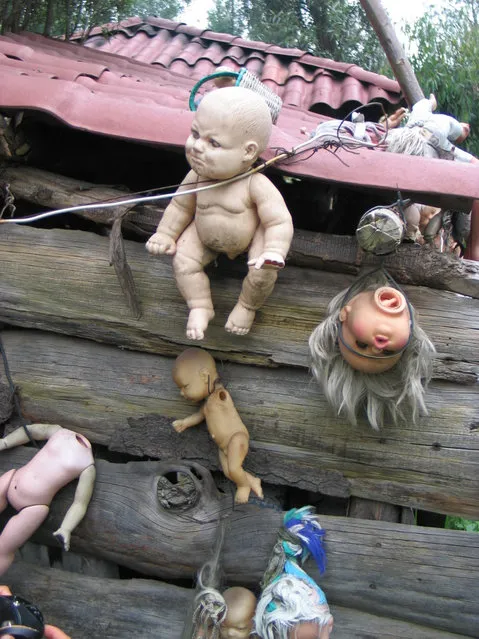
Island of the dolls. Photo by Virginiaglee
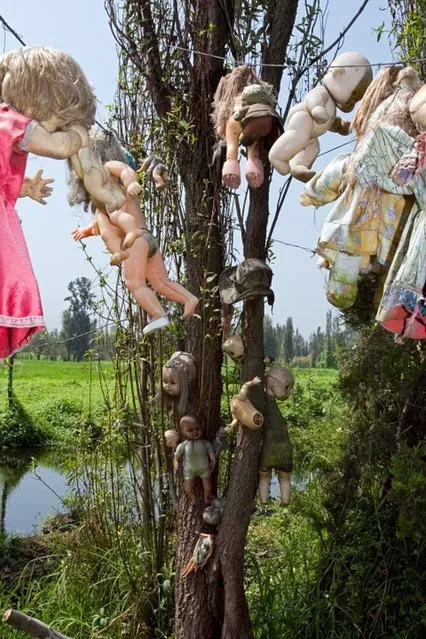
Within these peaceful wetlands, 18 miles from the capital, lies a small island on Teshuilo Lake where, amid the indigenous vegetation, thousands of sinister dolls hang from the branches, all in varying states of decay. (Photo by ChinaNews.com)
30 Jul 2012 06:24:00,
post received
0 comments
